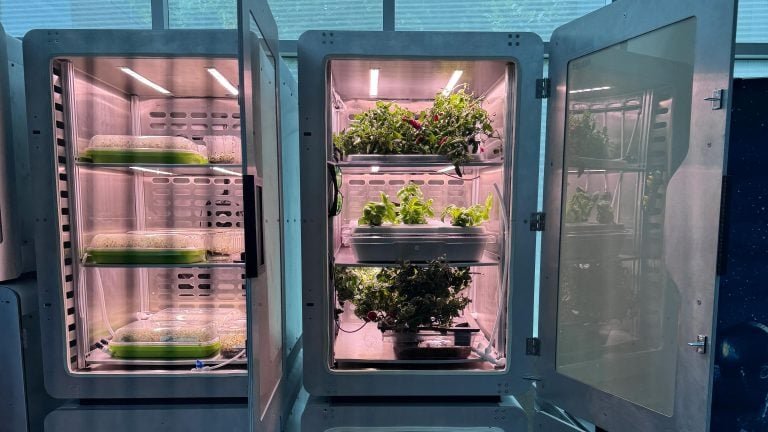Scientists have proposed a groundbreaking alternative to traditional farming, dubbed “electro-agriculture.” This innovative method replaces photosynthesis with a solar-powered process that converts CO2 into acetate, potentially reducing US agricultural land needs by 94%.
How Electro-Agriculture Works
- Solar panels absorb sunlight and power a chemical reaction.
- CO2 and water are converted into acetate, a nutrient-rich molecule.
- Genetically modified plants consume acetate as food, eliminating the need for photosynthesis.
Benefits of Electro-Agriculture
- Increased efficiency: 4% efficiency, compared to 1% for photosynthesis.
- Reduced land use: 94% decrease in agricultural land needs in the US.
- Controlled indoor farming: decouples agriculture from environmental factors.
- Smaller CO2 footprint: reduced energy consumption and emissions.
Future Applications
- Space agriculture: enables food production in space.
- High-calorie staple crops: cassava, sweet potatoes, and grain crops.
- Commercialization: mushrooms, yeast, and algae can be grown using electro-agriculture today.
Challenges and Next Steps
- Engineering acetate-eating plants: reawakening native metabolic pathways.
- Refining acetate production: increasing efficiency and reducing costs.
Conclusion
Electro-agriculture has the potential to transform the future of farming, enabling sustainable and efficient food production. As research continues to advance, this technology may revolutionize the way we grow crops and feed the world.
Sources:
- Cell Press
- Joule
- University of California, Riverside
- Washington University in St. Louis
Related Articles:
- “Eco-Friendly Superfood: Food-Grade Wheatgrass Variety Released for Public Use”
- “Unlocking Earth’s Deepest Secrets: How Ancient Volcanoes Disrupted Our Climate”
- “Game Changer: New Chemical Could Protect Crops From Drought”
Share Your Thoughts:
What do you think about electro-agriculture? Share your thoughts in the comments below!

















